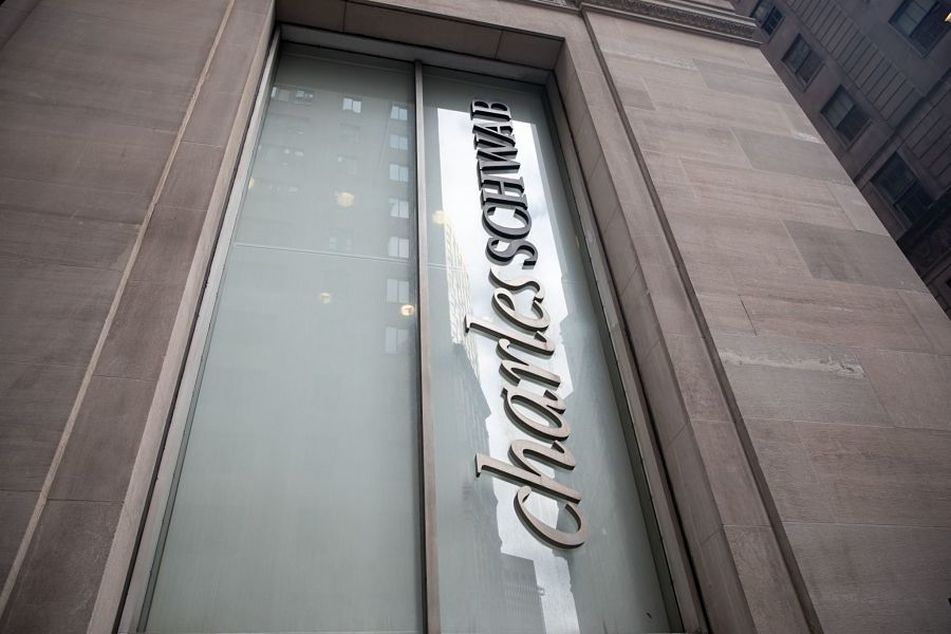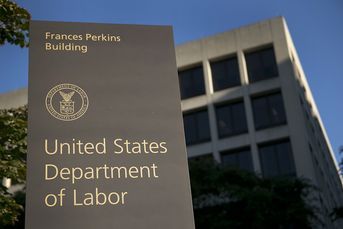RMD data, Schwab communications roil indie advisors post-TD

Advisors who custodied at TD Ameritrade are adjusting to life under Schwab.
One of the latest wrinkles in the Charles Schwab custody transition from TD Ameritrade’s system involves RMDs, and a lack of records for any that were taken this year before Sept. 5, advisors have told InvestmentNews.
That has left advisors who were part of the move double-checking to ensure that their clients who are 72 or older don’t take higher distributions from tax-qualified retirement accounts than necessary before the end of the year. However, the company has indicated that it moved RMD data to its systems.
Several advisors who spoke with InvestmentNews on condition of anonymity said that because required minimum distribution data did not transfer from TD Ameritrade’s VEO One system to Schwab’s, there will be a considerable headache for advisors who rely exclusively on records from the custodian.
“This is going to cause major problems if people take them twice,” one advisor said. “I don’t think they will realize the problem till December. Then it’s going to be a major crunch for advisors or not seen at all … The problem is that many advisors will depend on the information on the Schwab site and send out RMDs twice.”
Advisors did not want to be quoted by name because of their ongoing relationships with Schwab.
The company said that it addressed the RMD data issue ahead of the transition.
“Systematic RMD instructions moved to Schwab for traditional/rollover IRAs, as well as SEP and SIMPLE accounts,” Kelly Cook, director of advisor services communications, said in an email. “RMDs for IRAs, Sep-IRAs, and Simple-IRAs mapped over as a set dollar amount for 2023. This ensures the client meets their RMD for that year. Example: If there was $4,000 dollars remaining on the RMD and the client is set up for monthly distributions, Schwab set up four monthly payments of $1,000 to ensure the RMD is met for 2023.”
Additionally, historical data on distributions and contributions will be available in VEO through the first quarter of next year, with reports available for download, Cook said.
One advisor said that compared with other post-transition issues, the RMD data problem is minor. Advisors can look up that information in customer relationship management programs – if they use one – the advisor said. But if they don’t, going through individual account statements is the next best option, albeit time-consuming, they said. “Schwab will tell you, ‘That’s your responsibility’” to keep track of RMDs.
A related issue that advisor noted was that the taxes on RMDs were set to default levels after the move, even though some states don’t tax retirement income. A client in Iowa, for example, has money being set aside for state taxes, even though the state doesn’t tax RMDs, and the advisor said they cannot intervene and have the issue fixed. The client has to work with Schwab to change the taxes, they said.
A third advisor who has a large number of clients who are older than 72 said they proactively downloaded all RMD data prior to the custody platform change.
“We’re tracking when they’re writing checks for charities, because that is a really big question mark,” they said.
NO TRANSACTION FEES
Schwab has been building out its roster of funds available without transaction fees, which is a big selling point for independent advisors. Being able to offer clients institutional share classes of numerous mutual funds helps advisors articulate their value, one said.
“This is our competitive edge. When we go to sell our services to a client, they can go off on their own and do [fund selection] themselves, but we say, ‘We are professionals,’” with access to the lowest-cost share classes, the advisor said. While TD Ameritrade’s no-transaction-fee platform, like Schwab’s, included thousands of mutual funds available in low-cost share classes, the lists were not identical, they said. That has led them to have to review clients’ portfolios to ensure that they don’t contain funds that now have transaction fees.
“I had to go in and revise about 45 investment plans and take out funds that Schwab would charge a fee for,” they said. Although the custodian indicated that it would waive transaction fees for some of the affected funds if the client used a noninstitutional share class, that was not a good alternative, the advisor said.
That issue is likely an oversight, they said. “I just think they don’t know this. I don’t think they would deliberately do this.”
However, another advisor said they prefer Schwab’s list of no-transaction-fee funds and that their client portfolios haven’t been affected by the change. That advisor said the access since the transition to institutional shares of funds from T. Rowe Price, Vanguard and Dimensional Fund Advisors is a big plus.
The company provides 7,500 no-load or load-waived funds without transactions fees, Cook said. Advisors who moved from TD Ameritrade “now also have access to more than 1,100 institutional no transaction fee (INTF) funds cross 18 fund companies,” she said. The firm will add funds to the line up next year as well, she said.
CLIENT RELATIONSHIPS
The issue that advisors who were with TD Ameritrade cite most often is the communication that Schwab has with their clients. In some cases, clients have had to resolve issues directly with Schwab, without the help of their advisors. Schwab also sends notices and communications to customers that advisors don’t also receive, so they’re sometimes blindsided by the problems clients run into, advisors told InvestmentNews.
“TD Ameritrade had the investor in focus. They would never communicate directly with your client without having you communicate with them,” one advisor said. “It all points to Schwab [being] very retail-focused.”
For example, one client who was traveling outside the U.S. could not get into his account for two weeks, because his mobile phone number had changed from what was on record, and he couldn’t use two-factor authentication, the advisor said, adding that they could not intervene.
“I spoke with four of my advisors, and collectively, we have about $450 million in assets under management. All four of us are really unhappy, and I think come the first of the year, we will be looking around [for a new custodian].”
Complicating that is that custodians can charge platform fees to clients, and that does not go over well, especially for smaller accounts, the advisor said.
“It’s a wonderful opportunity for new custodians to come into the space,” they said.
The fact that clients have to work with Schwab to resolve account issues, rather than having advisors handle it on their behalf, leads some customer to ask why they are paying the advisor, another said.
That advisor is debating whether to add another custodian for new accounts, but so far they “haven’t found anybody whose technology is even close enough.”
In working with clients to address issues that have arisen post-transition “our estimate is 20% to 25% more work in operations,” they said. “My ops people are going to get a nice bonus this year.”
However, Schwab reps have been listening to concerns, and the company has indicated that it will address them as soon as possible, the advisor said.
“I think we’ve seen the worst,” they said. “They are listening. We may not get the answer we want, but at least they’re looking at it.”
In a response to advisors’ concerns about notices sent to clients, Cook told InvestmentNews that “there are occasions when we are required to communicate directly to advisors’ clients for regulatory or account security-related reasons. We try to make sure advisors are aware of these instances and are informed when these types of communications are happening.”
She noted that the company knows that some advisors have been frustrated by not being able to directly help clients set up account access through Schwab Alliance, but the company made that decision to avoid security holes that could be created by third parties having access.
“It is critical for security and fraud prevention for advisors’ clients to set up their credentials themselves. Advisors cannot set up credentials on their client’s behalf,” Cook said. “If the client needs technical assistance with the credential creation process, Schwab provides technical support only via its advisor services client support teams.”
WHO GETS THE CLIENT?
A bigger issue that advisor, like others, pointed to is the fact that Schwab, with its presence in the retail business, is at odds with advisors.
“Schwab trying to grab clients is nothing new,” they said. “I don’t think they recognize the integral part that advisors are to the business, and they figure that they can take the business anyway.”
Previously, the company indicated in a statement via a public relations firm that the Schwab Alliance system is intended to strengthen the relationships that advisors have with their clients. At the recent Schwab Impact conference, Schwab executives noted that the company has been working to improve technology for advisors and has added DocuSign for e-signatures and onboarding.
Overall, advisors acknowledged that the migration of 3.6 million accounts across 7,000 advisors was a massive undertaking. Most of the transfer was a success, they indicated, which was a theme Schwab executives emphasized in the days after the migration.
But amid the unhappiness among some advisors, there have been calls to alternative custodians.
Mike Watson, head of RIA custody at Axos Advisor Services, said, “We’ve been winning a lot of business by just saying, ‘Try this out.’”
Consolidation in the custody business had led to a decline in customer service that puts advisors up for grabs, said Watson, who until 2021 was managing director of national strategic accounts at TD Ameritrade. “It’s good for the entire industry that there are a lot of choices for advisor. That elevates everyone’s game.”
Axos has been “signing firms every single week,” but many advisors that it’s having conversations with are trying to finish up the tax year before focusing on changes, Watson said.
“The advisors need to acknowledge that their level of flexibility has changed” with Schwab, he said.
“If you think about where TD did so well, it was a great alternative to Schwab,” he said. “Now it’s incumbent on me and others to ensure there is a good alternative.”
For its part, Schwab indicated that things have gone well for many former TD Ameritrade advisors, with about 2,000 of them having since opened more than 13,000 new client accounts. Forty percent of those were opened through the firm’s online onboarding program and another 24% were done using the new DocuSign integration, Cook said. Further, more than 80% of the advisors have used Schwab’s Move Money tool, representing 37,000 transactions, and/or have made trades on the Schwab platform.
“We have been listening to clients and have encouraged feedback about the platform,” Cook said, noting that some updates have already been made. “These updates include navigational and interface changes to make it easier for advisors to find what they need on the platform and refining policies and functionality.”
Editor’s note: This story has been updated with responses from Schwab.
Why advisors should consider adding options overlays to client portfolios
Learn more about reprints and licensing for this article.








